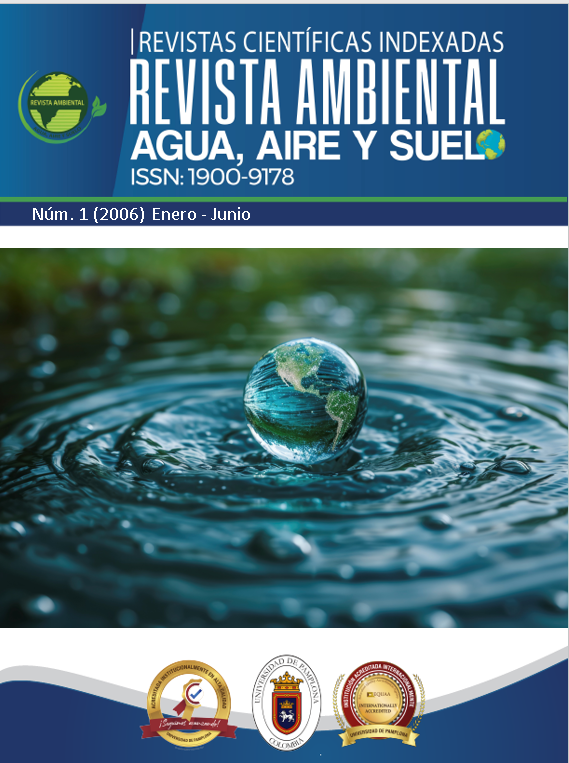Study on the generation of hazardous household waste in a residential area
DOI:
https://doi.org/10.24054/aaas.vi1.2045Keywords:
Hazardous and domestic waste, Municipal waste, LandfillsAbstract
Currently, it is estimated that hazardous household waste (HHW) accounts for between 0.01 and 1% of total municipal solid waste, depending on the characteristics and customs of each area; however, in Mexico, the information available on this subject is extremely limited. For this reason, this study on the generation of hazardous household waste was conducted in a middle-class residential area. Over a period of four weeks, 10 samples with an average weight of 90.43 kg were taken, and it was found that the net fraction of hazardous household waste amounts to 0.348% of the total solid waste generated in the area. The procedure used was an adaptation of Mexican regulations
concerning the sampling of municipal solid waste, and in addition, some criteria based on experience gained in studies of this kind in other countries were applied.
Downloads
References
Carillo, C. (1997). Boletín Salvia 15 de agosto: Envenenamiento en niños, lesiones por negligencia. Centro de Investigación en Sistemas de Salud / INSP. http://www.insp.mx/salvia/9715/sal97152.html
Dorian, G. (1988). Household hazardous wastes. En H. M. Freeman (Ed.), Standard handbook of hazardous waste treatment and disposal (pp. xx–xx). McGraw-Hill.
Glaub, J. (1996). Residuos peligrosos domésticos. En H. F. Lund (Ed.), Manual McGraw-Hill de reciclaje (1.ª ed. en español). McGraw-Hill.
Higuera, C. (1998). Focos, pilas y envases, desechos domésticos de alta peligrosidad. México.
Instituto Nacional de Bellas Artes. (1978). Anuario de arquitectura mexicana 1977. México.
Martínez Pantaleón, O. (1995). Mi pediatra: ¿Cuáles son las sustancias que con mayor frecuencia lo pueden intoxicar? http://www.mipediatra.com.mx/intoxi.htm
Minnesota Pollution Control Agency (MPCA). (1992). Minnesota solid waste composition study, 1990–1991. Part I. Minnesota.
Minnesota Pollution Control Agency (MPCA). (1993). Minnesota solid waste composition study, 1991–1992. Part II. Minnesota.
Norma Oficial Mexicana NOM-AA-15-1985. (1985). Método de cuarteo.
Norma Oficial Mexicana NOM-AA-22-1985. (1985). Selección y cuantificación de subproductos.
Paddock, T. (1989). The cost and benefits of household hazardous waste collection programs. The Academy of Natural Sciences.
Revista Residuos. (1997). Experiencia piloto de recogida selectiva de residuos tóxicos y peligrosos contenidos en los RSU (tóxicos del hogar), 6(34).
Rosenzweig, R. (1996). What’s so special about special wastes? World Wastes: The Independent Voice.
University of Missouri. (1993). Household hazardous products (WM6003). Household Hazardous Waste Project. http://outreach.missouri.edu/xplor/wasteman/wm6003.htm
U.S. Environmental Protection Agency (USEPA). (1991). Conducting remedial investigations/feasibility studies for CERCLA municipal landfill sites. Office of Emergency and Remedial Response.
U.S. Environmental Protection Agency (USEPA). (1995). Household hazardous waste characterization study for Palm Beach County, Florida: A MITE program evaluation. Office of Research and Development.
Vázquez, A., & Sánchez, J. (1994). Propuesta para el control de residuos peligrosos generados en mínimas cantidades por fuentes no industriales. Notas AMCRESPAC, 1(5).
Downloads
Published
Issue
Section
License
Copyright (c) 2006 REVISTA AMBIENTAL AGUA, AIRE Y SUELO

This work is licensed under a Creative Commons Attribution-NonCommercial 4.0 International License.










